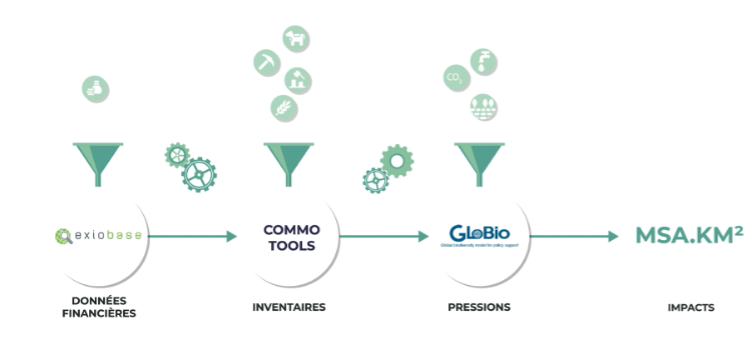The Global Biodiversity Score (GBS), developed by CDC Biodiversité, is a robust, streamlined tool designed to quantify your organisation’s impact and dependency on biodiversity across the entire value chain.
It works directly from your company’s data, whether financial data, inventory data, or environmental pressure data, and combines several scientific models (including GLOBIO and EXIOBASE) to translate complex inputs into a single, actionable impact metric: MSA.km².
This approach ensures that decision-makers can rely on their own data to measure biodiversity impacts, understand dependencies, define goals, targets and trajectories aligned with the Kunming-Montreal Global Biodiversity Framework and align strategies with frameworks such as TNFD, CSRD, etc.



